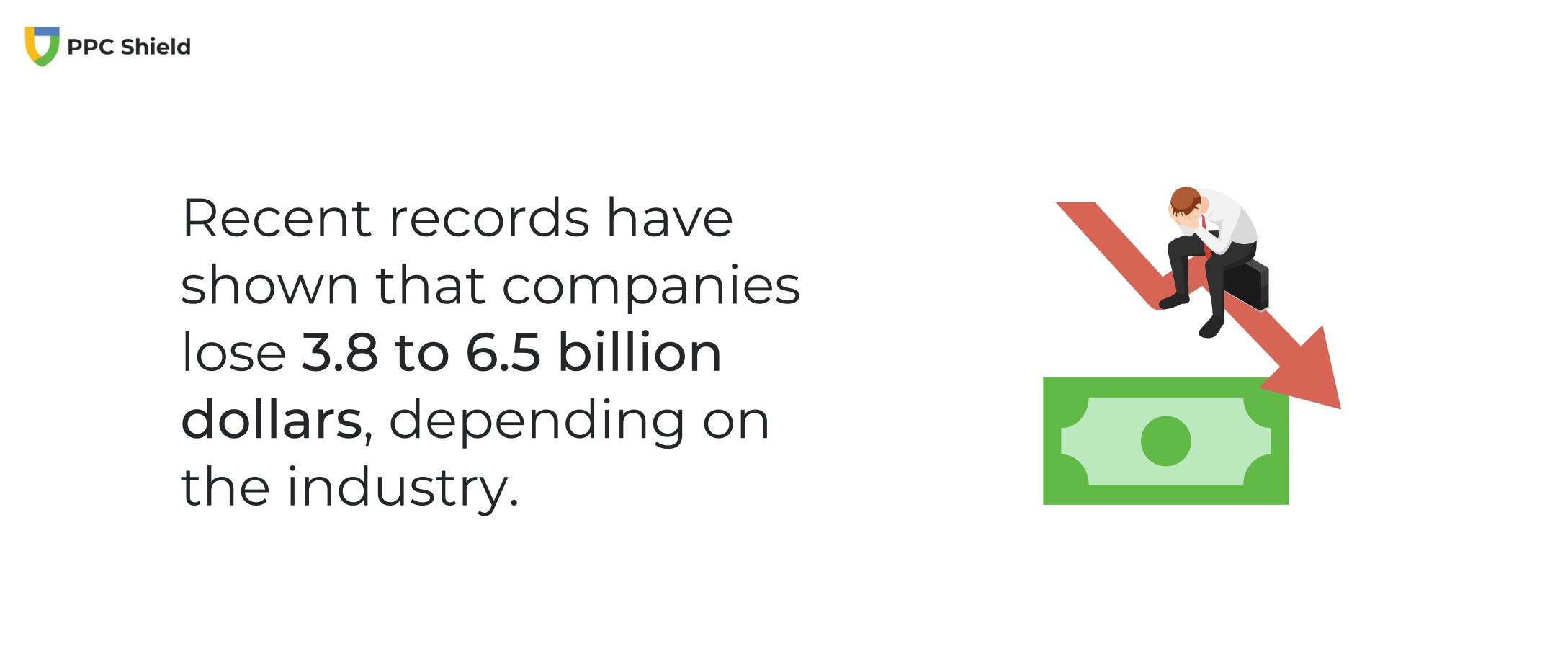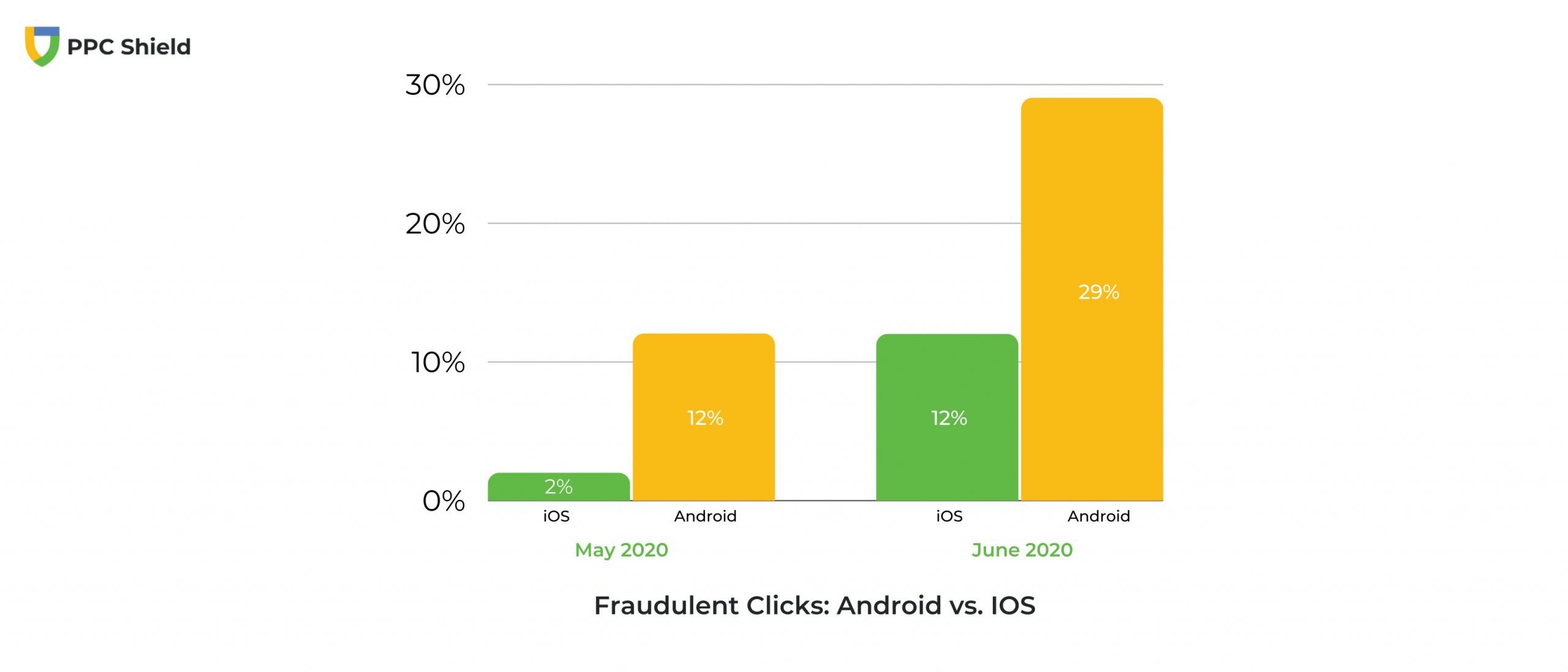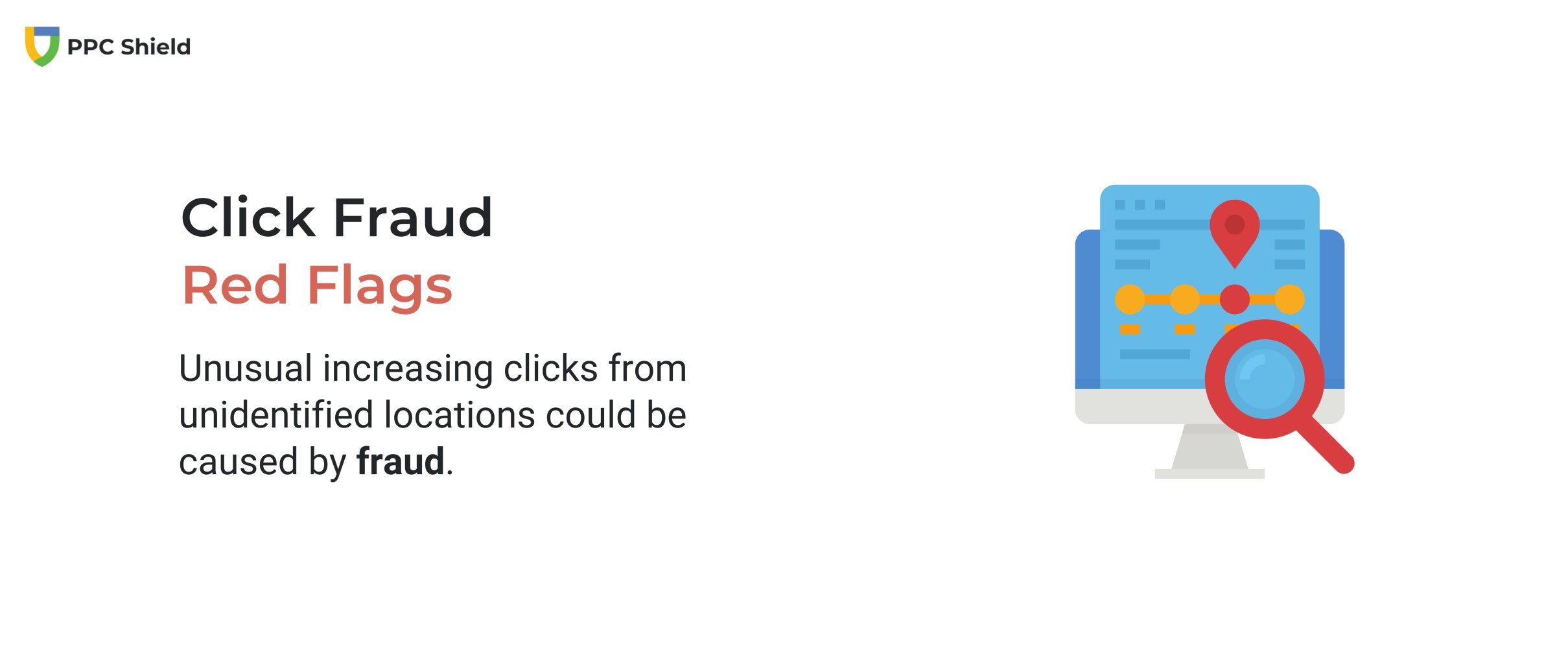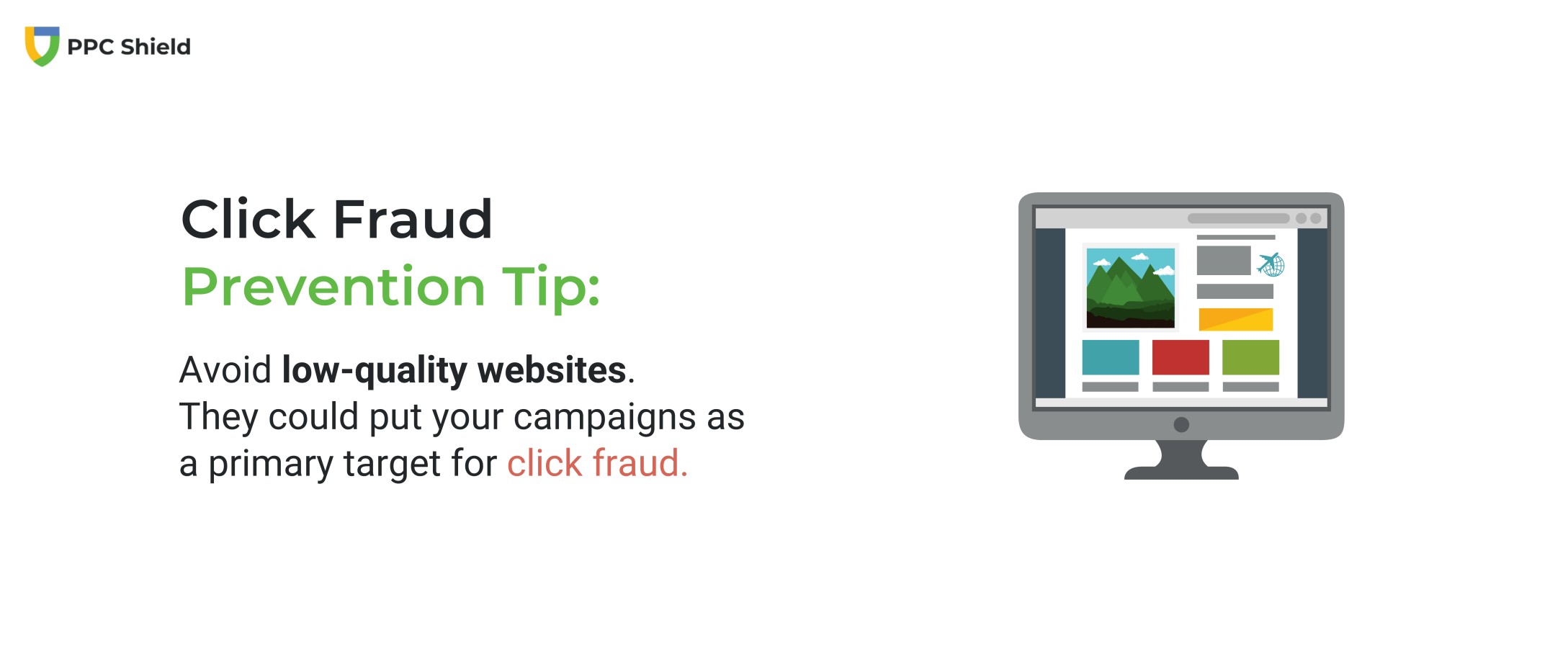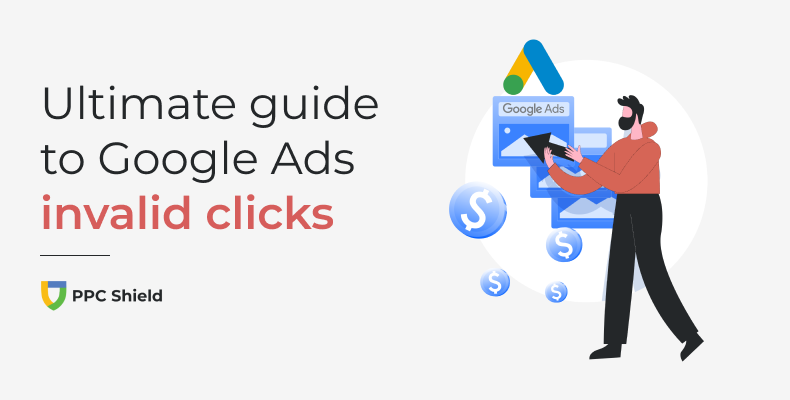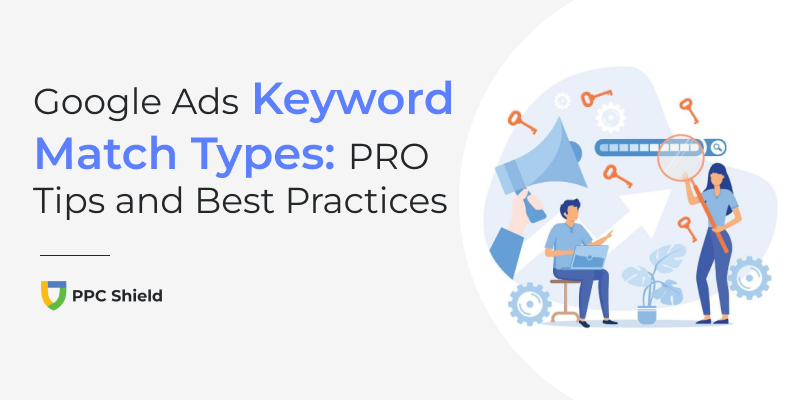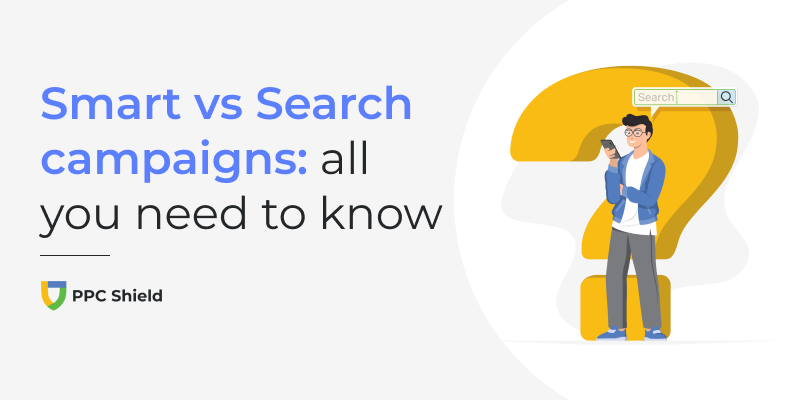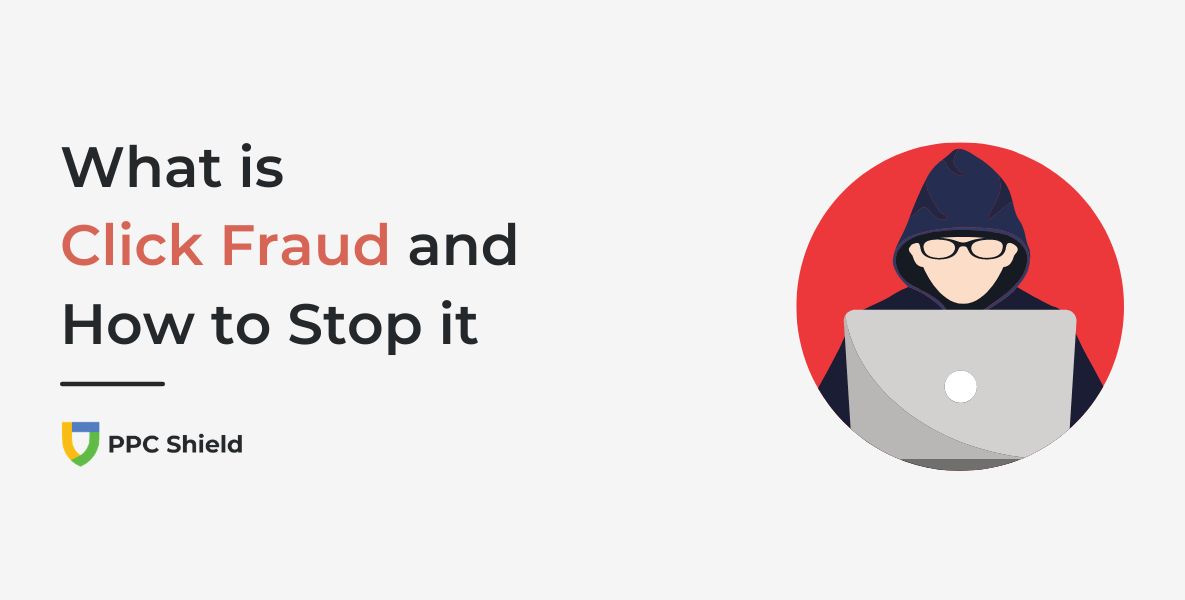
Have you recently found out about click fraud and would like to learn all there is to know about it, how it works, and how to stop it?
Don’t fret! In this article, we’ve provided essential information on click fraud for beginners, along with some tips and tricks on how to stop it in its tracks with PPC Shield!
Already familiar with click fraud? Jump straight to click fraud prevention tips.
What is Click Fraud and How Does it Work?
To give you a brief introduction of what click fraud is, it’s when a human visitor or a bot disguises themselves as real visitors on a webpage and clicks on any ads, button, or hyperlink you may have within the webpage. Not only can click fraud affect webpages, but fraudsters can also target Google Ads.
Click fraud is done to deceive a platform or service into thinking that real users engage with their webpage and ads. The crime usually occurs when links are clicked multiple times. Fraudsters usually initiate this by using bots that click repeatedly.
These bots make up approximately 50% of all internet traffic, and websites that serve ads are visited as much as 20% by click bots. The story behind almost all ad fraudsters is their plans to seek financial gain.
Companies can also turn to click fraud to damage their competitors’ ad budgets by hitting their pay-per-click ads with click bots. Cybercriminals also use click fraud to boost their unreliable web pages higher in search rankings to make their services look legitimate.
There are other types of ad frauds, but the most common types are:
Fraudsters use bots that pretend to be human traffic and sell bulk impressions to publishers at low rates.
Fraudsters use this to forge their websites’ value by making it look like a high-quality platform to gain substantial programmatic bids.
Fraudsters use this type of fraud to create several fake impressions on a single page view by placing multiple ads on top of each other, basically “ad stacking” them.
Fraudsters use this click fraud method to generate money by placing ads within a website without the publisher’s consent. The publisher will never have any idea about the activity at all. The fraud usually covers or sometimes replaces the existing ads.
Is Click Fraud Illegal?
Yes!
It’s now illegal, and just recently in 2020, it was finally considered a crime in the US and more countries will follow in making it illegal soon. If accused and found guilty, fraudsters can go to prison for up to 10 years.
What are Invalid Clicks?
Google Ads invalid clicks are clicks on ads that Google deems illegitimate. This can be considered as unintentional clicks or clicks that include malicious software.
As stated by Google, here are some examples of what they believe invalid clicks are:
Manual clicks made to boost your advertising costs or increase profits for website owners who host your ads.
Non-human clicks made by bots, automated clicking tools, and other deceiving software.
Irrelevant clicks that are useless and hold no value for advertisers, such as double clicks.
Who is Responsible for Click Fraud?
There are many forms of click fraud. It can range from accidental clicks by actual customers to click farms. Each industry is affected by click fraud differently, and not just 1, but multiple parties can be responsible for this.
To know who may be responsible for fraudulently clicking your links or ads, you’ll need to understand the 4 common click fraud offenders.
Competitors
Level of Threat: 8/10 and the most responsible for the majority of click fraud.
Reason for Click Fraud: To waste your PPC budget.
Webmasters
Level of Threat: 6/10 and is only applicable to Google’s display network advertisers.
Reason for Click Fraud: To gain extra income, displaying ads on their website.
Fraud Rings
Level of Threat: 5/10, only target expensive keywords of big companies.
Reason for Click Fraud: Gain a lot of revenue in a short period of time.
Unhappy Customers
Level of Threat: 4/10, tend to click the same ads daily.
Reason for Click Fraud: To take revenge on the company through financial damage.
What are Click Bots?
Click bots have been around almost as long as the start of paid digital marketing. These bots can lower your marketing efforts with no intentions of stopping, and they continue to become quite challenging to diminish over the years.
Generally, the bots are designed to click on whatever the Fraudster programs them to click, which could be any of your Google Ad, Youtube ad, and Facebook ad placements.
The Fraudster then receives cash payouts for each click or video impression on the ads that his site includes. All of this is happening while your ad account pays for the wasted clicks.
Bots can come in a type of virus or Trojan that can inject itself on a desktop, tablet, server, or cellphone. Once it enters the device, it can be used as part of a network to click on several ads multiple times.
As stated by the University of Baltimore, PPC marketing managers have lost $23.7 billion dollars through click fraud and click bots in 2020 alone.
How Much Money Do Companies Lose From Click Fraud?
Worldwide digital buying and selling have increased exponentially since the start of COVID-19, so it’s pretty clear that click fraud losses have also gone up.
The ad fraud industry will become the world’s second-biggest market for digital crime in 2025, with the first being drug and human trafficking, as predicted by the World Federation of Advertisers.
With that being said, the amount of money companies lose from fraudulent attempts per year ranges from 3.8 to 6.5 billion dollars, depending on the industry.
Which Industries are Affected the Most By Click Fraud?
Now you know how much click fraud costs companies per year, it’s time to know which industries are affected the most by these criminal attempts.
Industries such as e-commerce, education, gaming, and technology are all affected differently by ad fraud, and the list goes on. Although, we’re here to talk about the top 3 industries that are the most affected, as reported by Bloomberg, such as:
Finance
22% of traffic is bot-related.
Family
18% of traffic is bot-related.
Food
16% of traffic is bot-related.
These industries have one thing in common: a high cost per click, making them an attractive click fraud target. If you’re an advertiser and you fall between any of the 3, it’s essential to know the upcoming statistics on click fraud in 2021 and how we can prevent it.
Click Fraud Statistics in 2022
Before getting into 2022 statistics, you’ll need to know the damages click fraud made during the pandemic. Just in 2020, a total of $35 billion dollars was lost globally to ad fraud, as reported by MarTech Series.
Click fraud had increased dramatically last year during the initial Covid-19 lockdown in April and May, Black Friday, Cyber Monday, and increased rapidly during the 2020 US elections. With most of the ad fraud increase driven by CTV (connected TV) activity, the losses were predicted to generally rise by 16% in 2021 compared to 2020.
Click Fraud During the Pandemic
Click fraud has been reported to have worsened during Covid-19, specifically on mobile devices. Recent studies have shown that mobile click fraud increased 62% during the pandemic through non-human, fraudulent, or invalid clicks.
For Android devices, fraudulent clicks went up to 12% in May 2020 and 29% in June 2020 out of all android clicks. As for iOS devices, click fraud went up to 2% in May 2020 and 12% in June 2020 out of all iOS clicks.
Overall, record shows that Android devices have taken about 81% of mobile fraudulent clicks out of the 85% fraudulent clicks coming from mobile devices alone at the start of the pandemic.
Does Click Fraud Affect Website Analytics?
Yes!
Click fraud can affect website analytics making it nearly impossible for people who run websites to measure an ad’s exact effectiveness or if the clicks have been coming from real users. This can be a problem for companies who would like to see which content from their ads engages an actual human audience.
How to Identify Click Fraud and Prevent it
Identifying click fraud may be challenging for someone who isn’t quite familiar with what they should strictly be looking for.
In the list below, we’ve provided you all the click fraud red flags you should be aware of and what preventive measures you should take.
Identifying Click Fraud
- If you’ve noticed unusual increasing peaks in impressions from unidentified locations, these could be fraudulent clicks.
- Visitors from foreign countries could be something to be concerned about. If your ads are attracting foreign countries into your geo-targeted campaign, this could possibly be a sign of click fraud.
- If you find a drop in average session length, it may also be a sign of click fraud. Your website’s average session length can be used as a benchmark to compare your current session length to.
- A drop in your ROI is another indicator of click fraud. If your online ads randomly start to plummet unexpectedly, then this could indicate fraudulent clicks have been made.
Why Click Fraud Prevention is So Important
It may be less of a hassle for you to take importance to suspicious traffic, but click fraud prevention is crucial if you want to boost the quality and engagement of your ads. Financially speaking, eliminating bot-driven click fraud and cleaning up your traffic makes sense by saving you a ton of effort and money in the long term.
Tips and Tricks on How to Stop Click Fraud
1. Familiarize yourself with your traffic source. You should know exactly where your ads will be running. Doing your research and choosing the right and most trustworthy ad network can help stop fraudulent clicks from frequently occurring on your ads.
2. Always keep a lookout for unusual traffic. Data that does not match the usual performance on your ads or uncommon high CTR should indicate fraud.
3 Never settle for low-quality websites. They’re always the primary target for click fraud. It’s not necessarily wrong to limit your exposure by only keeping your ads on high-value websites. Choosing any website that relates to your keywords can do more harm than good.
4. Target only specific countries. Do your research on the countries known as click fraud zones and try to avoid reaching your ads to those regions as much as possible.
5. Have a reasonable cost per click. Low CPCs tend to attract low traffic quality, making your PPC ads more vulnerable to click fraud.
The Purpose and Importance of Click fraud Prevention Softwares
If you want to eliminate and stop click fraud in its tracks without doing much work, it’s important to invest your money in click fraud prevention software such as PPC Shield.
Using a click fraud protection software can help you block incoming threats and fraudulent activities for all your ad campaigns, in result increasing quality traffic and performance. Our software helps advertisers save money on their campaigns in just 4 powerful steps:
Step 1 – PPC Shield has the ability to monitor each of your Google Ad campaigns and can analyze the quality of each click the ad receives. The software takes many factors into consideration, including the technical and behavioral aspects.
Step 2 – Our software can block all suspicious and fraudulent clicks instantly. You can track all processes through your admin panel in real-time.
Step 3 – Using our software, you will save money and ensure a better ROI on your ad campaigns. You’ll be able to see the results as early as the first day of use.
Step 4 – You’ll receive comprehensive reports that include saving calculations and a summary for all blocked clicks. It’s easy to understand and evaluate your results.
Overall, any kind of click fraud protection is ultimately a great advantage for advertisers and their companies. With the rise of click fraud during these times, it can be quite challenging to prevent on your own.
Choosing the right fraud prevention software such as PPC Shield, that can help block and prevent fraudulent activity on your ads, is always a great investment and will definitely be worth it in the long-run for your upcoming and active ad campaigns.

